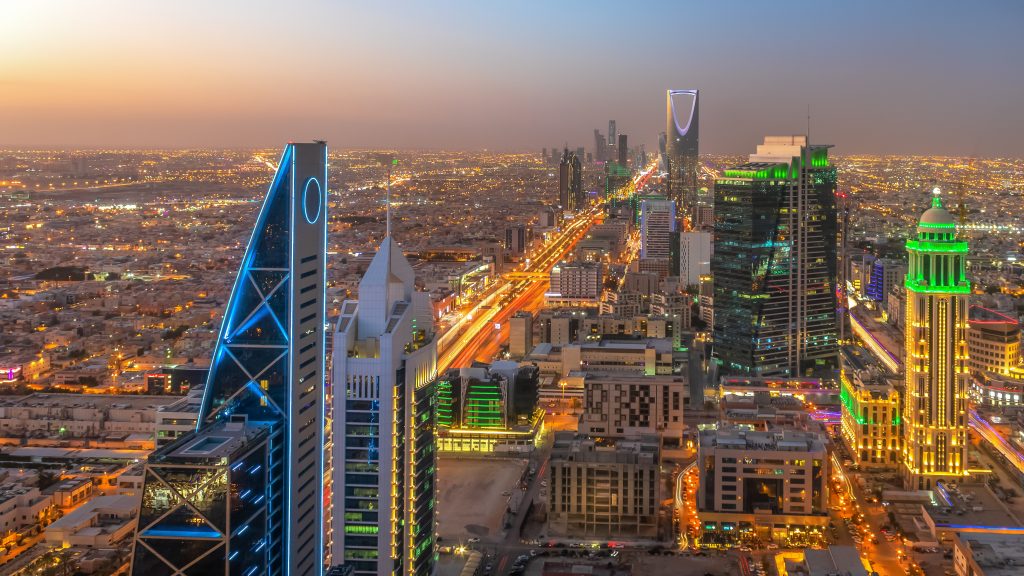In 2023, Saudi Arabia’s economy, the largest in the Arab world, saw a contraction of 0.8 percent from the previous year. This downturn was largely attributed to a significant reduction in the oil sector’s performance, while in contrast, the non-oil sector experienced a 4.4 percent expansion.
The oil industry witnessed a 9 percent decrease throughout the year. Conversely, the government sector exhibited a growth of 2.1 percent, as reported by the General Authority for Statistics.
A variety of economic sectors showed positive growth, with the social and personal services sector leading with an impressive 10.8 percent increase. The sectors of transportation, storage, and communications followed suit, growing by 7.3 percent.
There was also notable growth in the wholesale and retail trade, restaurants, and hotels by 7 percent, as well as in the financial, insurance, and business services by 6.8 percent. The mining and quarrying sector expanded by 5.7 percent.
However, the activities in crude petroleum and natural gas saw a 9.4 percent decline, and petroleum refining activities dropped by 7.4 percent.
By the year’s end, the kingdom’s Gross Domestic Product (GDP) at current prices had surpassed 4 trillion Saudi riyals (around $1.06 trillion). Crude petroleum and natural gas activities constituted 25.4 percent of the total GDP, with government services contributing 15.7 percent. Other significant contributions came from wholesale and retail trade, restaurants, and hotels at 9.7 percent, manufacturing excluding petroleum refining at 8.8 percent, petroleum refining activities at 6 percent, and real estate at 5.9 percent.
Net taxes on products accounted for 5.4 percent of the kingdom’s GDP.
The GDP growth was impacted by a 6.5 percent decrease in net exports, although imports saw an increase of 9.9 percent over the course of the year. Furthermore, Brent crude prices fell by approximately 10 percent in 2023, affected by an unexpected rise in supply from non-OPEC countries and doubts regarding future crude demand.
In response, Saudi Arabia, along with its OPEC+ allies, has been actively reducing crude output to stabilize the market. The kingdom, also the world’s leading oil exporter, announced the extension of its voluntary oil production cut of one million barrels per day into the second quarter of 2024. This is in addition to the 500,000 barrels per day reduction that started in April 2023 and is scheduled to last until the end of December.
As part of its Vision 2030 initiative, Saudi Arabia is aggressively pursuing economic transformation, launching various initiatives and policy reforms aimed at diminishing its oil dependency, expanding its non-oil economic base, and fostering domestic industries and job growth.
In a positive turn, business activity within Saudi Arabia’s non-oil private sector quickened in February. The seasonally adjusted Riyad Bank purchasing managers’ index rose to 57.2, up from 55.4 in January, indicating sustained growth as it remains above the neutral 50 threshold.
Looking ahead, the International Monetary Fund projects the kingdom’s economy to grow by 2.7 percent in the current year and 5.5 percent in 2025. However, in the last quarter of the previous year, the GDP saw a 4.3 percent annual contraction, with oil activities declining by 16.2 percent, even as non-oil and government activities grew by 4.2 percent and 3.1 percent, respectively.
During this period, the sectors of financial, insurance, and business services saw the highest annual growth rates, with wholesale and retail trade activities, along with restaurants and hotels, also performing strongly. The GDP at current prices reached 1.02 trillion riyals in the final quarter of the year.
